I am going in the AUX of a radio with a low voltage headphone input from an iPod. To create a safety network for turn on popping I need to use two capacitors and a resistor as designed by BMW, so the design is not under debate. I have everything in place except the capacitors. I'm trying to determine which ones to use.
By the circuit diagram it seems these are what I want: .022µF Capacitor (Orange Drop)
As you notice they are in the audio circuit actually breaking the line. I've always used caps to go to ground, but never to complete break the line so I just wanted to confirm I was reading this correctly.
I have green 2A223J which i believe are correct?
By the circuit diagram it seems these are what I want: .022µF Capacitor (Orange Drop)
As you notice they are in the audio circuit actually breaking the line. I've always used caps to go to ground, but never to complete break the line so I just wanted to confirm I was reading this correctly.
I have green 2A223J which i believe are correct?
An externally hosted image should be here but it was not working when we last tested it.
Last edited:
Welcome to bavauto.com | Radio Auxiliary Input Kit - For cars WITHOUT Navigation
We are making this.
We are making this.
The deal is that if you don't build this circuit into the plug for the iPod the system turn on pop goes through a 10 speaker system with DSP and high powered amp. The entire thing is Harmon Kardon so killing off HK speakers with loud turn on pops are lowest on my list.
I just need to find a way to make this diagram work.
I just need to find a way to make this diagram work.
This shows the caps on the iPod side.
That means I need to move the resistor.
That means I need to move the resistor.
An externally hosted image should be here but it was not working when we last tested it.
Last edited:
This is what it should look like minus the fact I don't have a 300k resistor tonight so I am using a placeholder.
iPod input on the top.
iPod input on the top.
An externally hosted image should be here but it was not working when we last tested it.
hi,
the 300K ohm resistor activates the AUX in on the BMW headunit. the headunit sees resistance across the left and right channels which enables the AUX in. if you try selecting AUX (stepping through source selection) without the circuit present, AUX isn't an available selection.
mark
the 300K ohm resistor activates the AUX in on the BMW headunit. the headunit sees resistance across the left and right channels which enables the AUX in. if you try selecting AUX (stepping through source selection) without the circuit present, AUX isn't an available selection.
mark
I JUST now did it. It works excellent except when the ipod is not feeding audio, like if I select a different artist the downtime makes a humming, grumbly sound like the caps are discharging or something. (I'd guess). Once the song comes back on about 4 seconds into the song it goes away. Does it every time consistently. Do I need another cap to keep the line voltage up or something?
Here's the whole thing for reference.
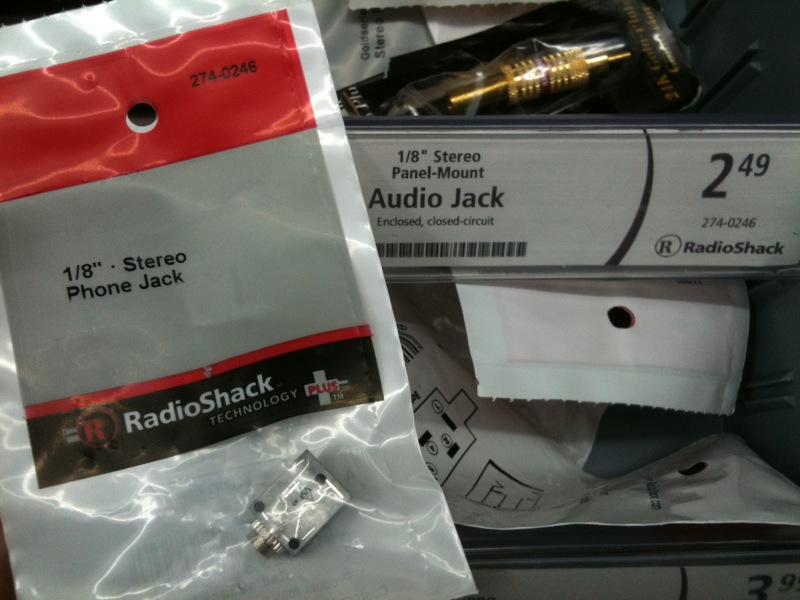
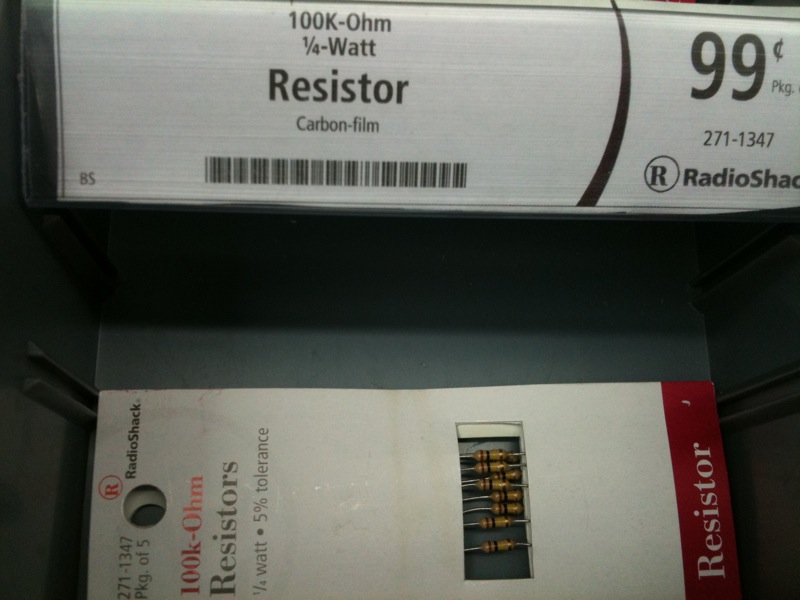
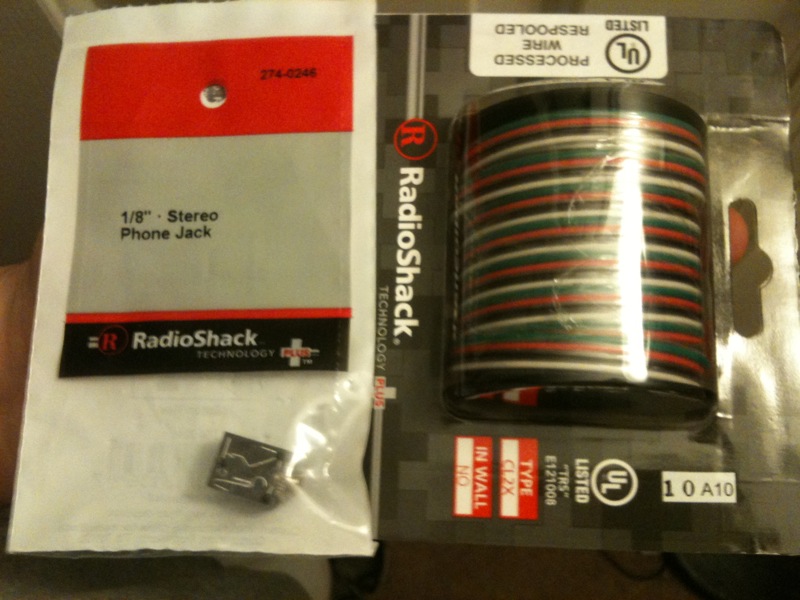
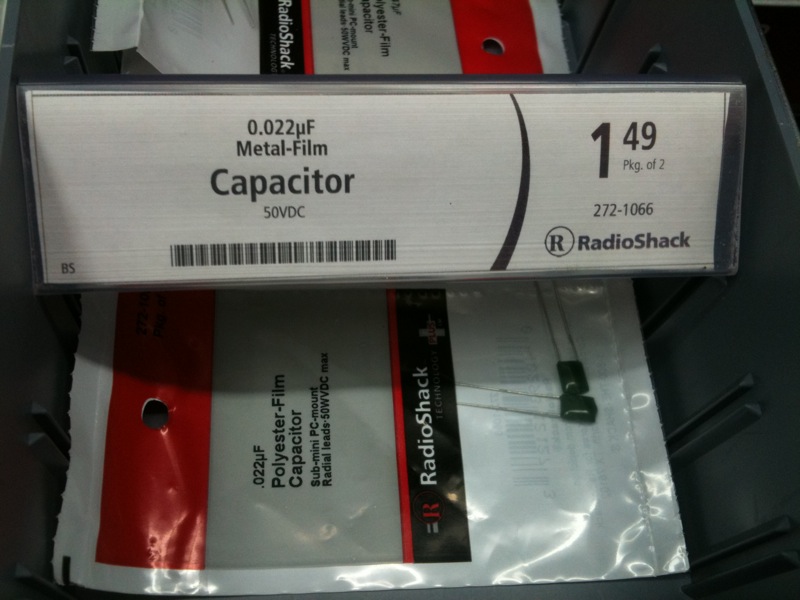
Would be nice if Radio Shack sold 300K resistors, but they do not so let's make one. This resistor lays across the R+L positive and tells the head unit to go into AUX mode. Just laying the 300 ohm resistor across pins 3 and 4 of the area where the ipod in signal goes will give you the aux selection on the radio (otherwise you don't get the option).
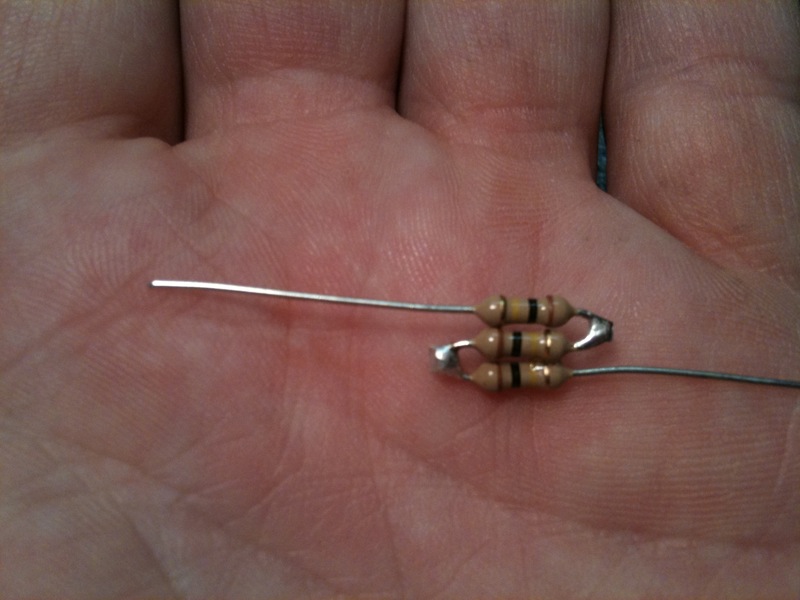
...and let's make it nice and safe.
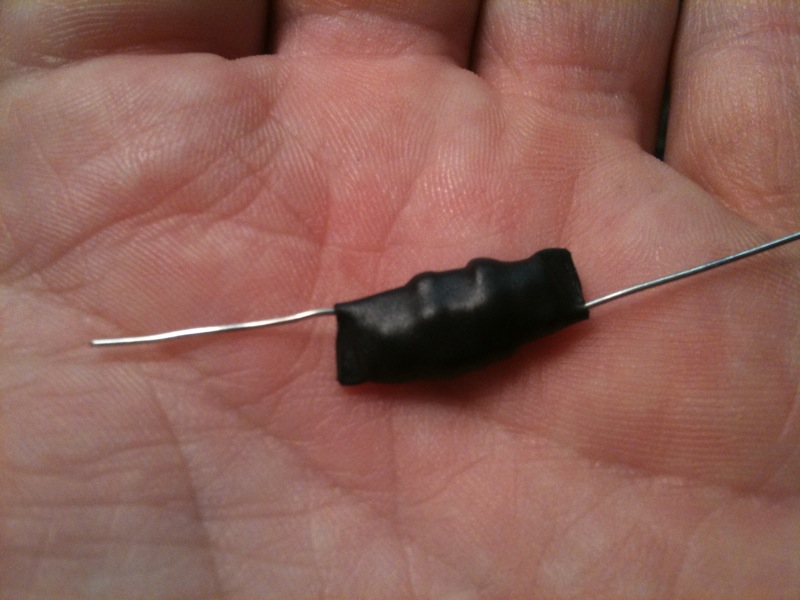
We're going to let the pics do the talking for a bit.
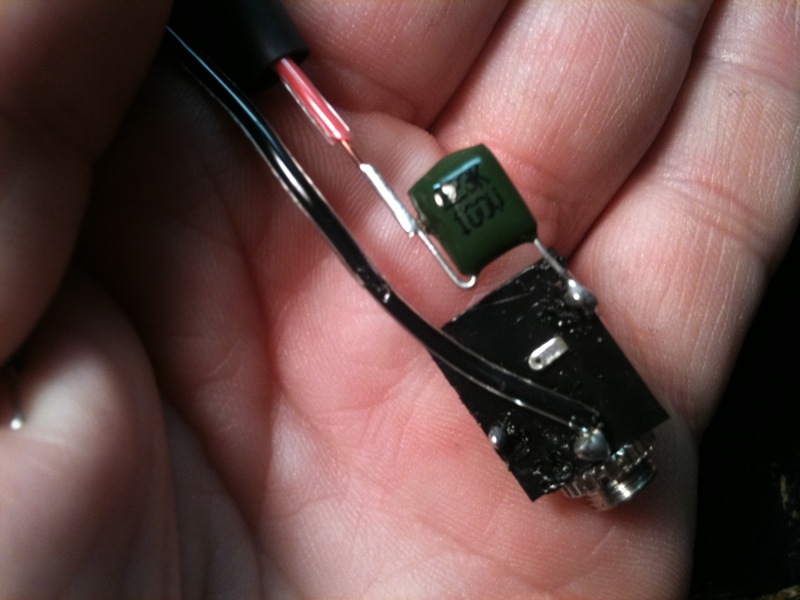
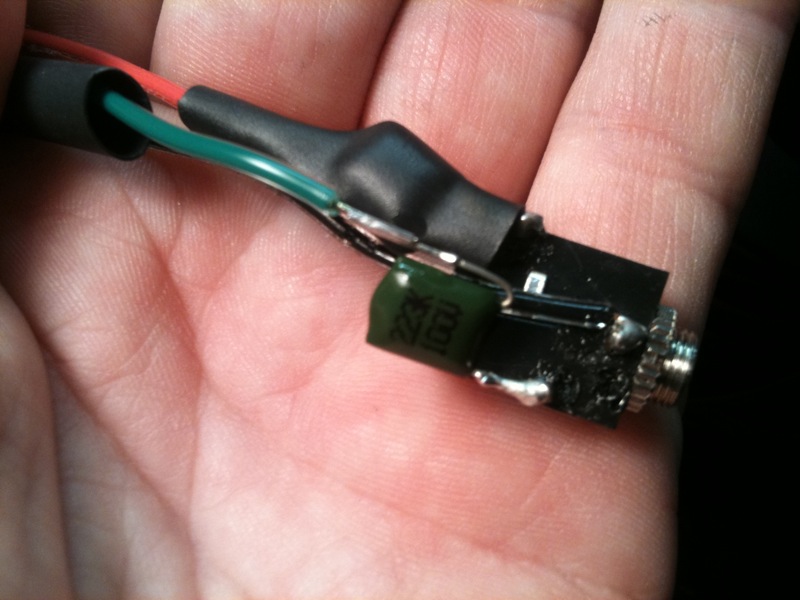
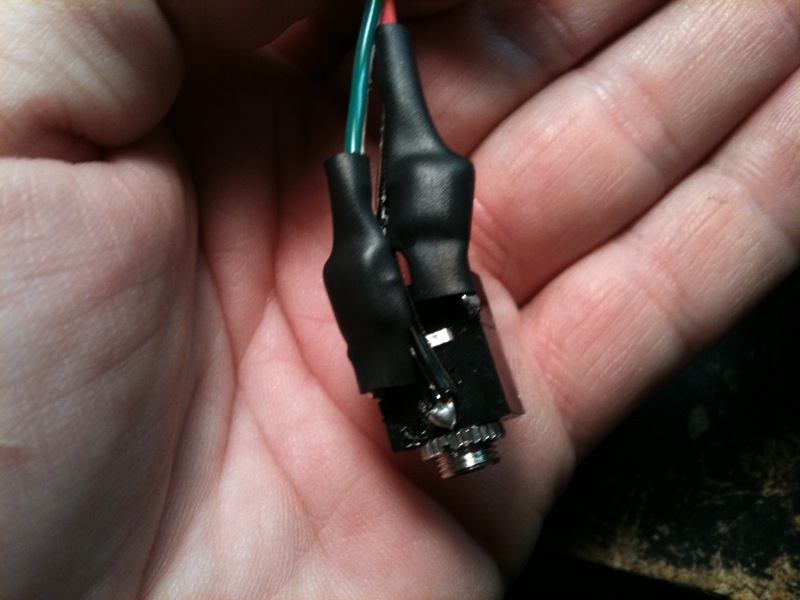
Here the resistor (300K we made) goes across the R+L positive. The capacitors are on the ipod side before the resistor, as the resistor and head unit must see each other first to go into AUX mode.
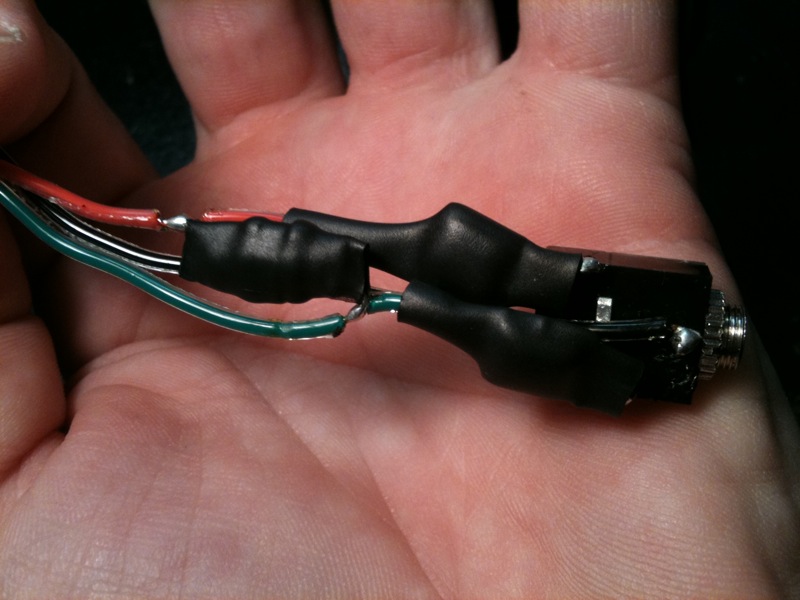
Just tape it all up and put it to the side for now since you've built the plug circuit. Since I am building into the overhead console I am going to do the writeup as such. Plug your iPod jumper cable into the new AUX plug and run it through to the other side.
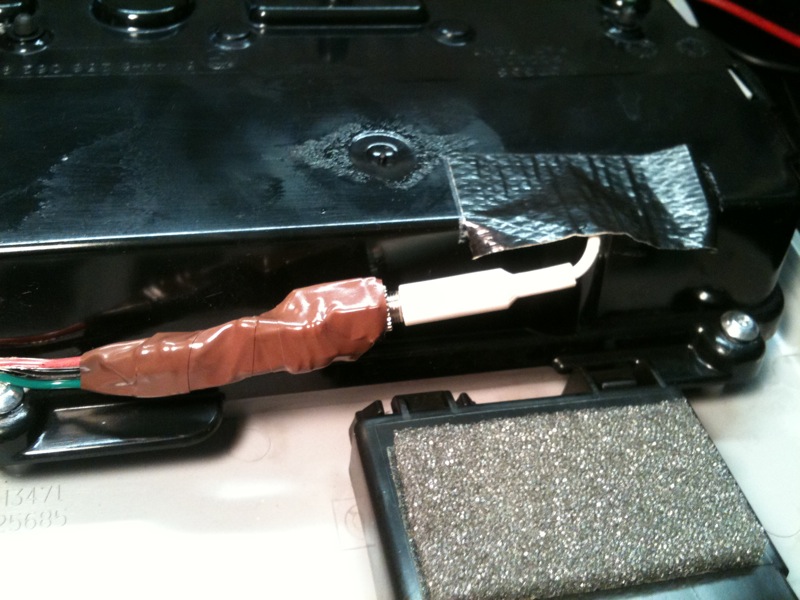
Now pick yourself an iPod charger cable up and dissect it for it's guts so your iPod will charge when you are driving.
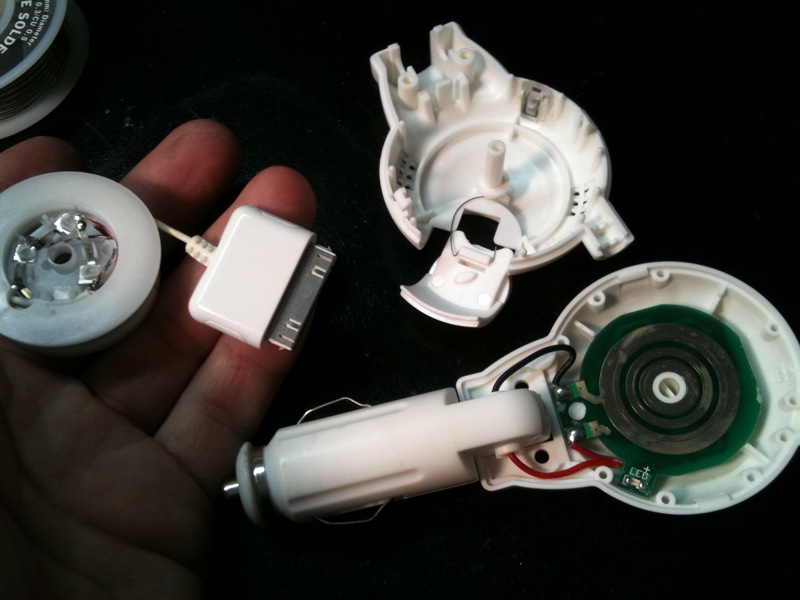
You'll use the green/red from the homelink plug for power since it turns on with the key and turns off when not in use. Ground to the sunroof motor mounting screws.
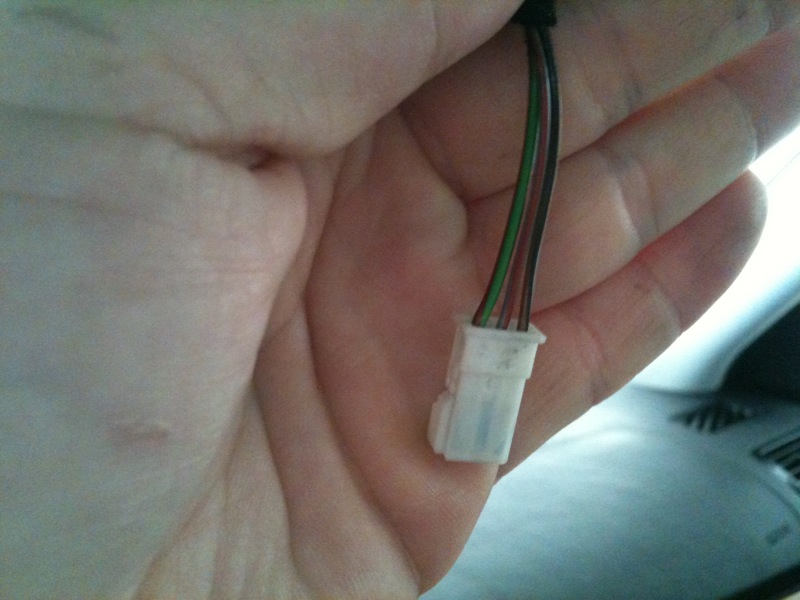
Run your AUX wire in through the roof and get it plugged in properly to the iPod and set up.
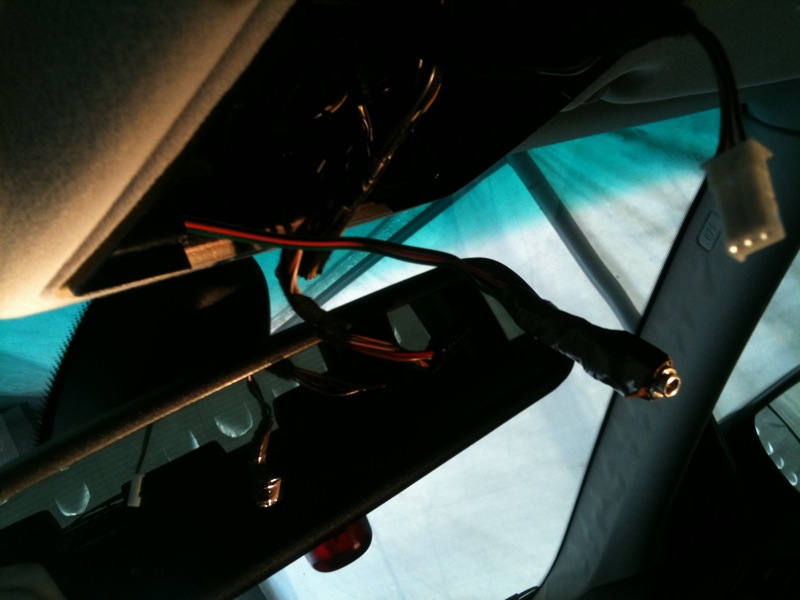
Bolt it all back up after you have made the connections for power and AUX to the ipod.
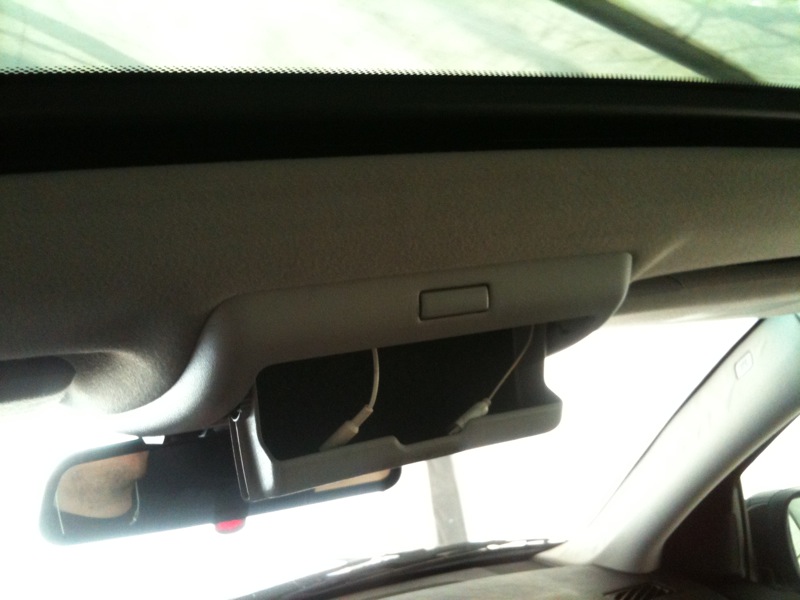
Set the iPod in to it's new space and connect it up.
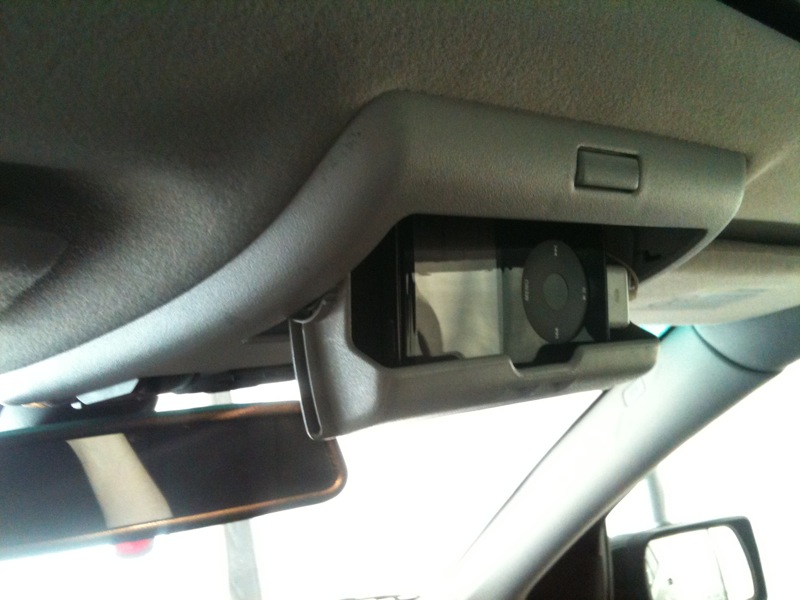
Turn the key on and see if your iPod is charging and has the little lightning bolt in the battery symbol.
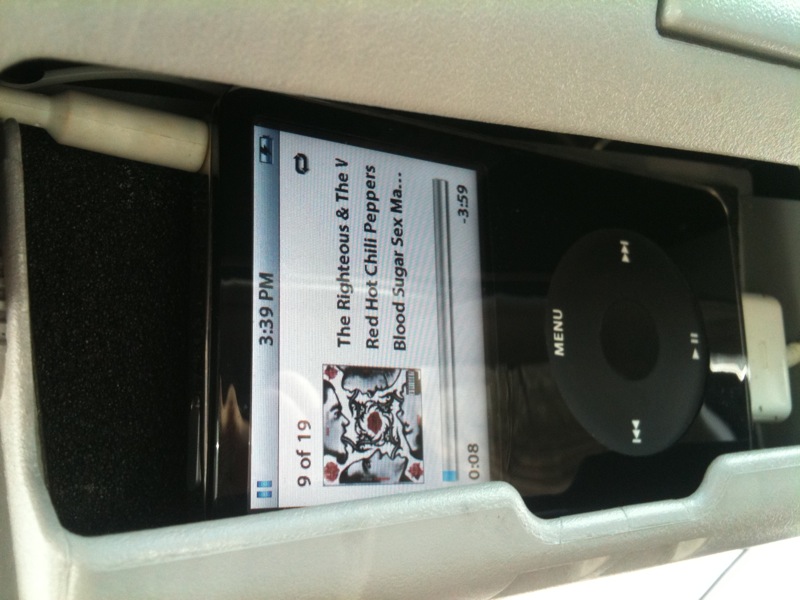
Pop the cover off your pillar and unscrew the screw to allow you to remove the pillar cover so you can run the wire down.
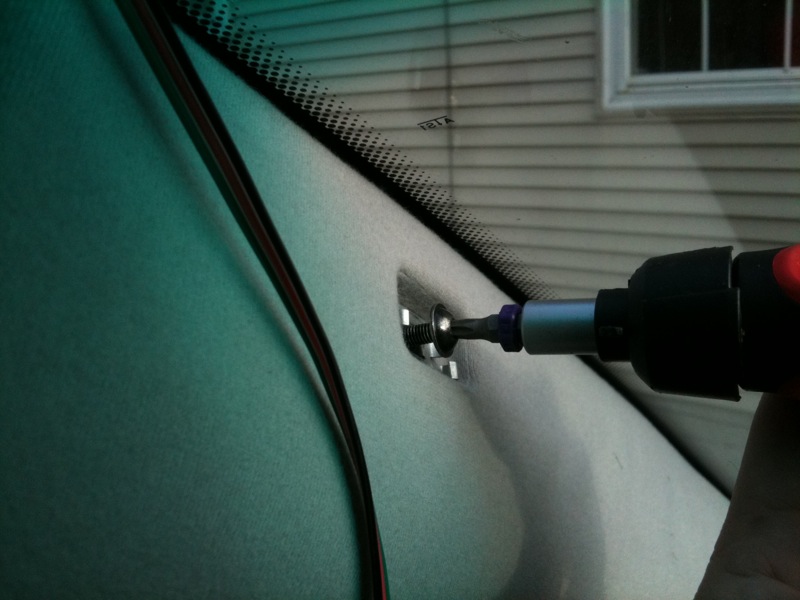
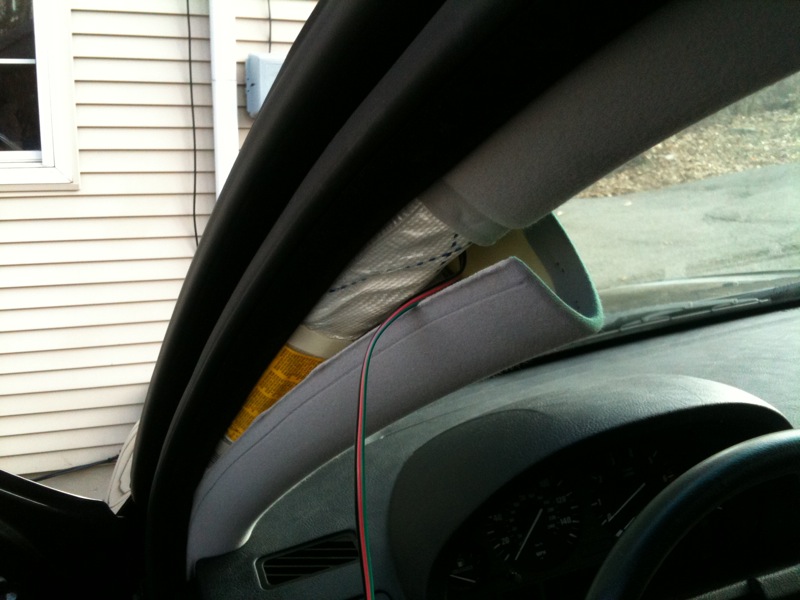
Stay away from the pillar airbag, run the wire along with the drain tube.
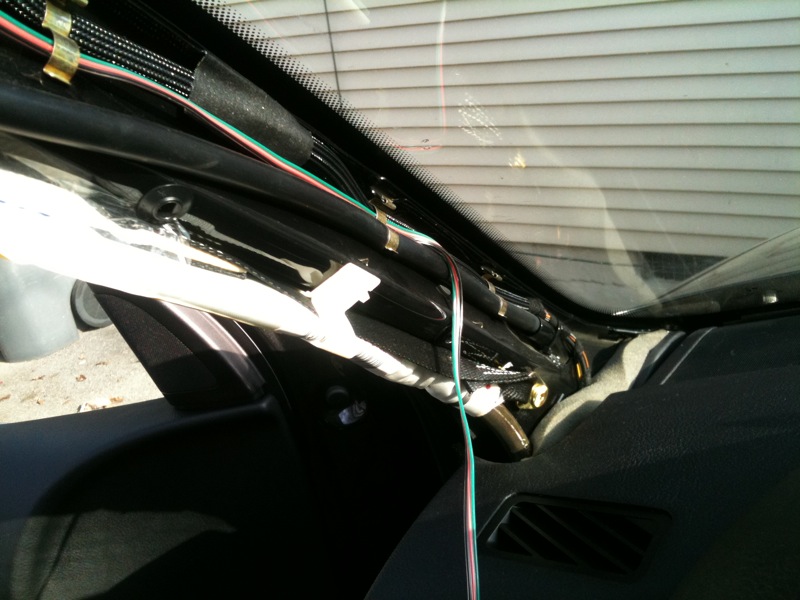
Then drop the lower pan from under the driver dash (couple screws and a few twist locks, no biggie) and run the wire over to the radio and feed it through.
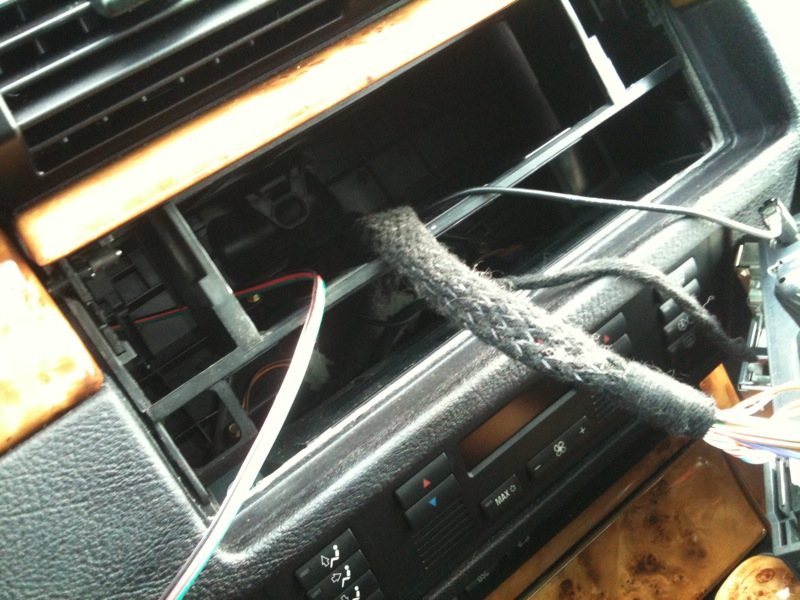
IF you look in the back of the plug where you are supposed to plug in (bottom right) it will be numbered. Pins 3 & 4 are R+L positive and pin 10 is common ground.
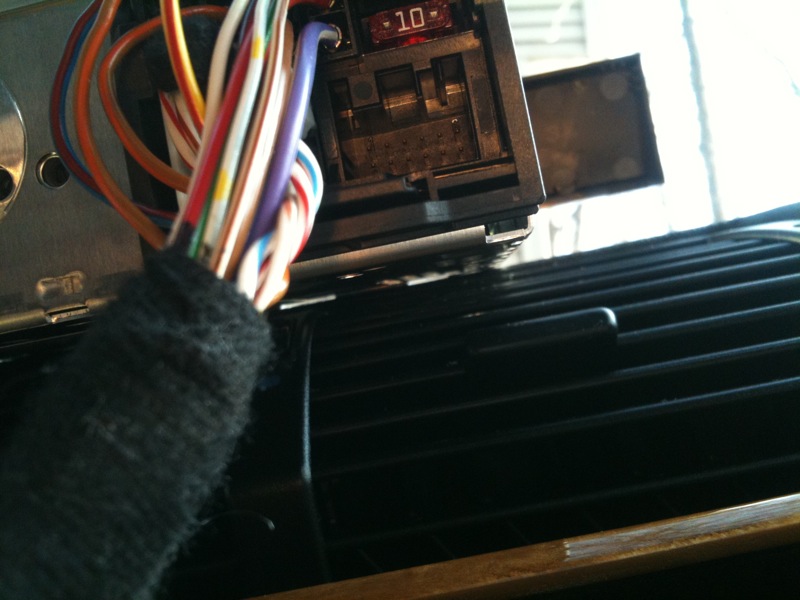
The pins are very common so picking up a few female pins to put on the end of your wire is easy enough, then just plug the wires in to the pins.
If you did it right, you will not have the AUX option when going through the sources. Turn the ipod on and ENJOY!!!!! : )
: )
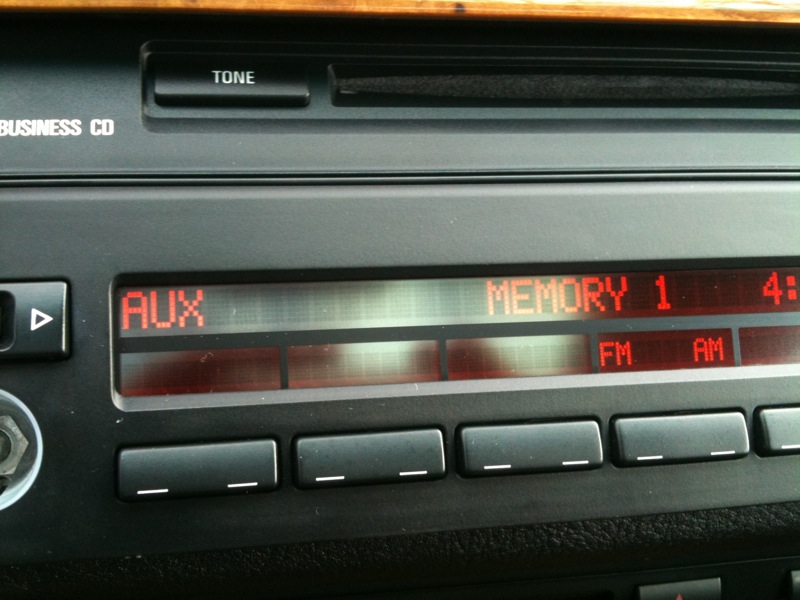
Would be nice if Radio Shack sold 300K resistors, but they do not so let's make one. This resistor lays across the R+L positive and tells the head unit to go into AUX mode. Just laying the 300 ohm resistor across pins 3 and 4 of the area where the ipod in signal goes will give you the aux selection on the radio (otherwise you don't get the option).
...and let's make it nice and safe.
We're going to let the pics do the talking for a bit.
Here the resistor (300K we made) goes across the R+L positive. The capacitors are on the ipod side before the resistor, as the resistor and head unit must see each other first to go into AUX mode.
Just tape it all up and put it to the side for now since you've built the plug circuit. Since I am building into the overhead console I am going to do the writeup as such. Plug your iPod jumper cable into the new AUX plug and run it through to the other side.
Now pick yourself an iPod charger cable up and dissect it for it's guts so your iPod will charge when you are driving.
You'll use the green/red from the homelink plug for power since it turns on with the key and turns off when not in use. Ground to the sunroof motor mounting screws.
Run your AUX wire in through the roof and get it plugged in properly to the iPod and set up.
Bolt it all back up after you have made the connections for power and AUX to the ipod.
Set the iPod in to it's new space and connect it up.
Turn the key on and see if your iPod is charging and has the little lightning bolt in the battery symbol.
Pop the cover off your pillar and unscrew the screw to allow you to remove the pillar cover so you can run the wire down.
Stay away from the pillar airbag, run the wire along with the drain tube.
Then drop the lower pan from under the driver dash (couple screws and a few twist locks, no biggie) and run the wire over to the radio and feed it through.
IF you look in the back of the plug where you are supposed to plug in (bottom right) it will be numbered. Pins 3 & 4 are R+L positive and pin 10 is common ground.
The pins are very common so picking up a few female pins to put on the end of your wire is easy enough, then just plug the wires in to the pins.
If you did it right, you will not have the AUX option when going through the sources. Turn the ipod on and ENJOY!!!!!
Last edited:
Actually I have enough info to perhaps seal the deal. This is a HARD DRIVE ipod and it doesn't make that noise when the hard drive is not buffering. When I change from song to song as long as it is in a row it doesn't do that, but if I change artists and it goes to a different spot on the hard disk I hear it and since it lasts for about 5 seconds it is buffering the song. I am hearing the hard drive interference.
Only way to test this is find a flash drive ipod. Whatcha think?
Only way to test this is find a flash drive ipod. Whatcha think?
Have you tried the circuit that you built?
Are you asking that because you wonder if series 0.02uF caps wipe out the low end?
When I was using a Sony D-15 CD player in the car many years back I built a pseudo differential input to control the noise. It consisted of two balanced input amps with the two '-' inputs tied to the CD ground terminal and the 2 '+' inputs to the L and R CD outputs. No clicks, pops, ignition, alternator or CD servo noise noise. The classical organ I listened to had sub 20Hz material and the subwoofer could play it. You'd never get LF through that capacitor unless the load impedance was so high it would pick up all sorts of unwanted stuff.
G²
stratus46:
Yes. The input impedance of the BMW head unit must be extremely high if the bass is not significantly attenuated by those caps.
o.l.t.:
If this is being powered by batteries alone, the hard drive is the likely culprit. If it's being powered by a power supply connected to the vehicle's electrical system, try running it from batteries alone.
Yes. The input impedance of the BMW head unit must be extremely high if the bass is not significantly attenuated by those caps.
o.l.t.:
If this is being powered by batteries alone, the hard drive is the likely culprit. If it's being powered by a power supply connected to the vehicle's electrical system, try running it from batteries alone.
- Status
- This old topic is closed. If you want to reopen this topic, contact a moderator using the "Report Post" button.
- Home
- General Interest
- Car Audio
- Making a turn on pop buffer
